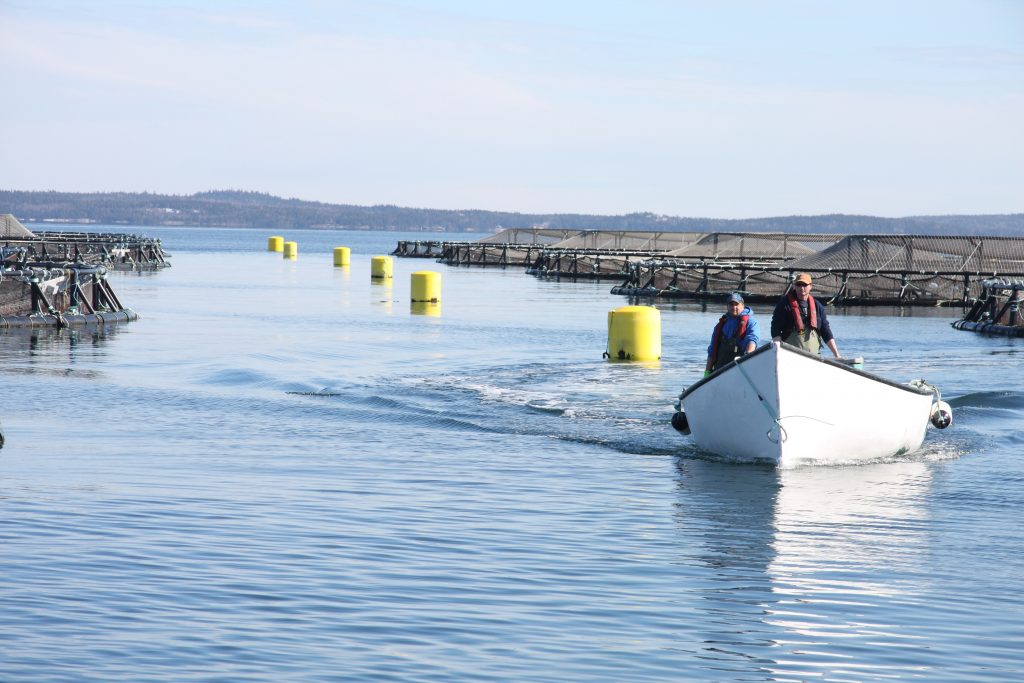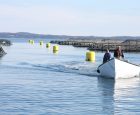
New Brunswick poised for growth
December 20, 2018
By Matt Jones
Increased demand for seafood globally and the decline of the wild harvest fishery made 2018 an especially busy year for the aquaculture industry in New Brunswick.
 Increased global demand for seafood and the decline of wild harvest made 2018 a busy year for New Brunswick farms such as this one.
Increased global demand for seafood and the decline of wild harvest made 2018 a busy year for New Brunswick farms such as this one. “With demand for seafood growing annually, and more than 75 percent of the region’s farmed salmon exported to the United States, Atlantic Canada’s aquaculture industry is well positioned to grow as one of this region’s biggest economic drivers,” says Susan Farquharson, Executive Director for the Atlantic Canada Fish Farmers Association.
Despite the bright outlook, the industry could still see some challenges. Sea lice continue to be a problem for the farmed salmon industry globally, but a newer challenge is climate change, says Farquharson.
“Climate change is not helping with record-setting ocean temperatures this year in Canada,” she says. “But our salmon farmers have always seen challenges as opportunities and this year was no different. We’re continuing to see advancements in fish farming technology, especially to deal with sea lice.”
Farquharson says that technology investment has been a major trend for the industry in 2018. The industry invested millions of dollars into research, including broodstock development, improved environmental performance, interactions with other species, understanding genomics and the development of new farm technologies, including alternative treatments for sea lice.
“The technological investments are amazing,” says Farquharson. “It’s all happening so fast it’s even hard for industry professionals like me to keep up. This industry is just getting started. The R&D as a result of this sector continues to not only inform our industry but all food sectors in the areas of animal health and processing, to name just two.”
Farquaharson notes that protein demand is rising while arable land and water and capture fisheries have declined to the point of not being able to meet the demand. But sustainable fish farming can fill that need.
“Land-based technologies are advancing thanks to the tremendous investment of the industry. We’re seeing fish spending more time in hatcheries before they go to ocean farms and more systems being developed for full-grow out, although none at commercial levels yet. It’s going to be interesting to see that technology continue to develop.”
Farquharson is also pleased to be working with the Fundy Salmon Recovery program. The program is a partnership between a variety of government agencies, academics and industry partners to increase the number of spawning salmon in the inner Bay of Fundy. The World’s First Wild Salmon Marine Conservation Farm raises endangered wild salmon in the ocean, to better their chances of survival. “We are so thrilled to be part of this leading-edge program in the Bay of Fundy that is seeing amazing wild salmon returns,” she says.
For 2019, Farquharson sees the ACFFA continuing its work to advocate for sustainable and responsible aquaculture growth in New Brunswick and Atlantic Canada. She says they will continue to be a strong voice on behalf of the industry that advocates for a responsible, effective regulatory framework. And they will continue to operate the ACFFA Limekiln Wharf Service Centre, which provides priority admission to salmon farmers who pay for access through annual fees.
“We’re proud of the work we do on behalf of the industry, which ranges from communications, to research, to government relations,” says Farquharson. “And, of course, we can’t forget that we operate a Marine Facility with over 50 members. Plus, our additional 30 members representing farmers, feed producers and numerous SMEs that provide support.”






